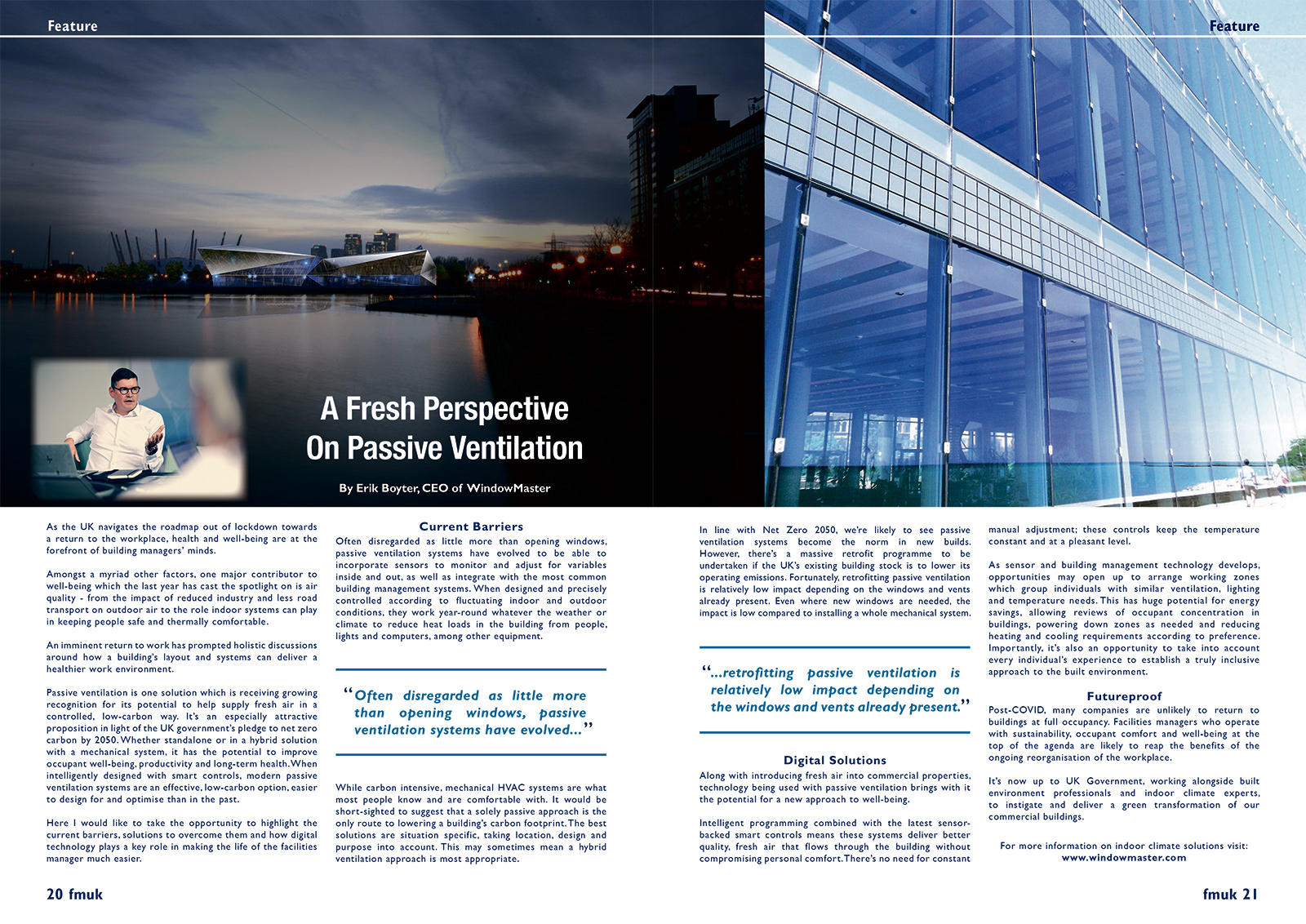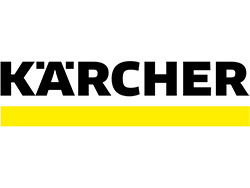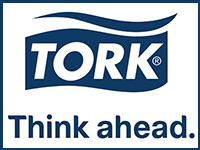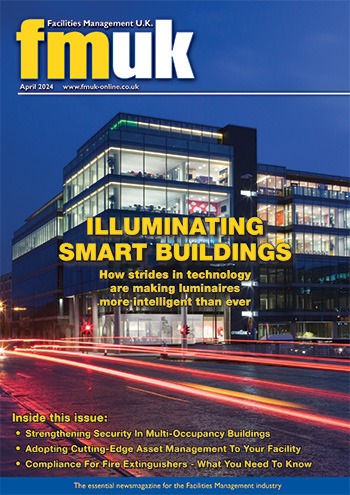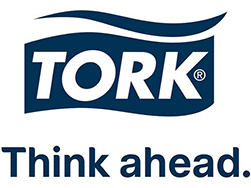A Fresh Perspective On Passive Ventilation
 By Erik Boyter, CEO, WindowMaster
By Erik Boyter, CEO, WindowMaster
As the UK navigates the roadmap out of lockdown towards a return to the workplace, health and well-being are at the forefront of building managers’ minds.
Amongst myriad other factors, one major contributor to well-being which the last year has cast the spotlight on is air quality - from the impact of reduced industry and less road transport on outdoor air to the role indoor systems can play in keeping people safe and thermally comfortable.
An imminent return to work has prompted holistic discussions around how a building’s layout and systems can deliver a healthier work environment.
Passive ventilation is one solution which is receiving growing recognition for its potential to help supply fresh air in a controlled, low-carbon way. It’s an especially attractive proposition in light of the UK government’s pledge to net zero carbon by 2050. Whether standalone or in a hybrid solution with a mechanical system, it has the potential to improve occupant well-being, productivity and long-term health. When intelligently designed with smart controls, modern passive ventilation systems are an effective, low-carbon option, easier to design for and optimise than in the past.
Here I would like to take the opportunity to highlight the current barriers, solutions to overcome them and how digital technology plays a key role in making the life of the facilities manager much easier.
Current Barriers
Often disregarded as little more than opening windows, passive ventilation systems have evolved to be able to incorporate sensors to monitor and adjust for variables inside and out, as well as integrate with the most common building management systems. When designed and precisely controlled according to fluctuating indoor and outdoor conditions, they work year-round whatever the weather or climate to reduce heat loads in the building from people, lights and computers, among other equipment.
While carbon intensive, mechanical HVAC systems are what most people know and are comfortable with. It would be short-sighted to suggest that a solely passive approach is the only route to lowering a building’s carbon footprint. The best solutions are situation specific, taking location, design and purpose into account. This may sometimes mean a hybrid ventilation approach is most appropriate.
In line with Net Zero 2050, we’re likely to see passive ventilation systems become the norm in new builds. However, there’s a massive retrofit programme to be undertaken if the UK’s existing building stock is to lower its operating emissions. Fortunately, retrofitting passive ventilation is relatively low impact depending on the windows and vents already present. Even where new windows are needed, the impact is low compared to installing a whole mechanical system.
Digital Solutions
Along with introducing fresh air into commercial properties, technology being used with passive ventilation brings with it the potential for a new approach to well-being.
Intelligent programming combined with the latest sensor-backed smart controls means these systems deliver better quality, fresh air that flows through the building without compromising personal comfort. There’s no need for constant manual adjustment; these controls keep the temperature constant and at a pleasant level.
As sensor and building management technology develops, opportunities may open up to arrange working zones which group individuals with similar ventilation, lighting and temperature needs. This has huge potential for energy savings, allowing reviews of occupant concentration in buildings, powering down zones as needed and reducing heating and cooling requirements according to preference. Importantly, it’s also an opportunity to take into account every individual’s experience to establish a truly inclusive approach to the built environment.
Futureproof
Post-COVID, many companies are unlikely to return to buildings at full occupancy. Facilities managers who operate with sustainability, occupant comfort and well-being at the top of the agenda are likely to reap the benefits of the ongoing reorganisation of the workplace.
It’s now up to UK Government, working alongside built environment professionals and indoor climate experts, to instigate and deliver a green transformation of our commercial buildings.
Click the article to enlarge it.
